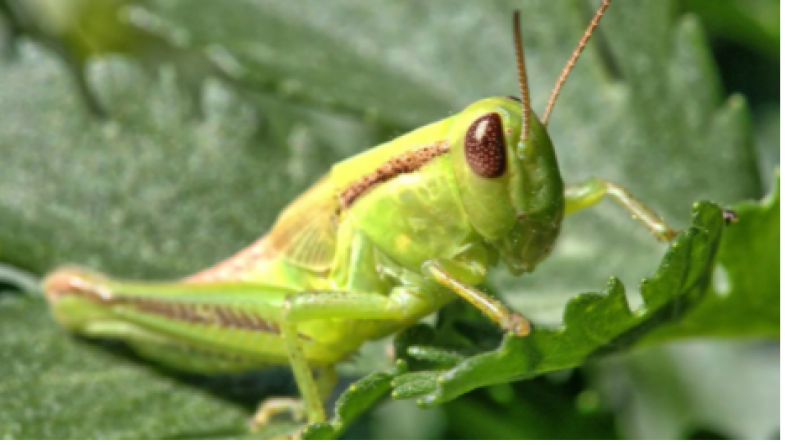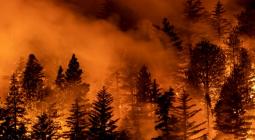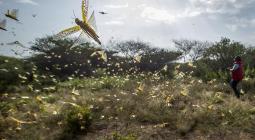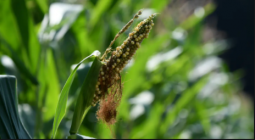Grasshopper Plague Is Latest Sign of Climate Crisis in U.S. West

The hot, dry weather baking the U.S. West is causing another problem for the beleaguered region: an overabundance of grasshoppers.
The crop-devouring insects are native to the region, and normally their population is too small to cause alarm, The Guardian explained. But warmer, drier winters beginning in 2020 created the ideal conditions for more of them to survive to adulthood. Now, their population is swelling, and ranchers fear that they will gobble up the vegetation their cattle rely on for food, according to CNN.
"Climate change is a concern to all of us, and when we see extreme events such as a very bad drought, we see natural phenomenon increase such as grasshopper outbreaks," former U.S. Fish and Wildlife Service biologist Sharon Selvaggio told CNN. "It's very concerning."
There are currently 13 states experiencing a grasshopper outbreak, according to a hazard map from the U.S. Department of Agriculture. In parts of Oregon, Idaho, Montana, Wyoming, Arizona, Colorado and Nebraska there are as many as 15 grasshoppers per square yard of land.
Grasshoppers are a problem for ranchers and farmers because of how much they eat, The Guardian explained. They compete with cattle for forage, strip the leaves off of fruit trees and settle in the dry areas around crops, eventually eating their way to the grain. Oregon Department of Agriculture entomologist and agricultural scientist Helmuth Rogg told The Guardian that can lead to losses of hundreds of thousands of dollars.
"The biggest biomass consumer in the country are not cattle, are not bison. They are grasshoppers," Rogg said. "They eat and eat from the day they get born until the day they die. That's all they do."
While the grasshoppers emerge during drought, they also compound its effects on agriculture.
"Ranchers are already short of forage because of the drought," Lassen County Director of the University of California Cooperative Extension David Lile told LAist. "They can't afford to lose more."
One rancher dealing with the infestation first hand is 70-year-old Deborah Jones of Northern California. Jones said she normally fed her cattle on summer grass, but that the grasshoppers made that impossible this year.
"I've already had to start feeding hay," Jones told LAist. "The animals won't go out and graze because the grasshoppers drive them insane."
Officials are working to suppress the insects with pesticides, but Selvaggio argued to CNN that this is not an effective long-term solution. One reason is that pesticides can harm grasshoppers' predators and competitors. Another factor in their proliferation, for example, is the decline of grassland bird species that would keep them in check.
"Climate change may bring us more grasshoppers in the future in increased frequency, duration or severity," Selvaggio told CNN. "We need those long-term solutions to address grasshoppers for the long-term because we do know that we may be facing more of this in the future if we don't really take this seriously."
7 July 2021
Ecowatch




